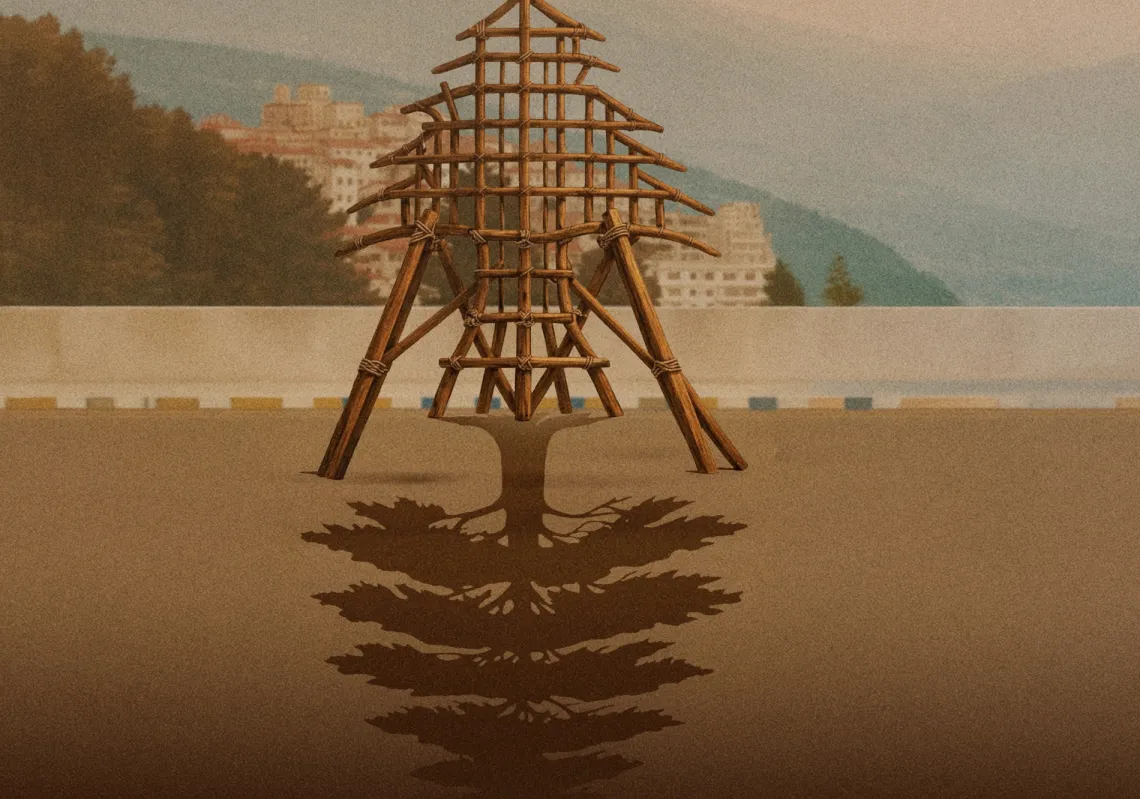Russia’s invasion of Ukraine has sparked an avalanche of discussion about the implications for Taiwan. One of the most commonly discussed lessons from the Ukraine War has been that China would need to think more seriously before waging a reunification war against Taiwan, given the setbacks suffered by the Russian invading forces. In my understanding, however, the risk of Beijing launching a cross-strait war was never high to begin with, so the “lesson” has little use.
History might repeat itself but not always. To illustrate the differences, we need to draw two parallels: China vs. Russia and Taiwan vs. Ukraine.
CHINA IS NOT RUSSIA
Comparing China and Russia, the two countries have very different strategic priorities. First, there is a great difference in their respective economic and military capabilities and potentials.
Economically, China has the second largest GDP in the world. As of 2021, China’s GDP was 76 percent of the United States’. In contrast, Russia’s GDP was less than 10 percent of that of the United States. What is more, China’s economic growth is more sustainable than Russia’s. The reasons are simple. China’s decades-long economic growth is based on comprehensive development in a variety of sectors: agriculture, labor-intensive manufacturing, high-tech industry, etc. Besides, largely due to the fact that China is the “world’s factory” and the related large demand for raw material imports, China is much better connected to the world economy than Russia. In contrast, Russia’s economic development is largely based on the energy sector.
Militarily, Russia maintains the world’s largest nuclear arsenal, in terms of the number of nuclear warheads, and a formidable conventional force, especially its land force. Ukraine is primarily a theater for land force, where Russia would be more capable of showing its strength than in a maritime theater. In comparison, China’s military, though experiencing fast modernization, is still decades behind that of the United States. China started modernizing its navy and air force only in the late 1990s, after the 1996 Taiwan Straits crisis, and like Russia, China’s land forces were traditionally stronger than its naval and air forces.
Added to that, Taiwan is a more complicated target for an invasion. It is true that the Taiwan Strait is narrow, with a width of less than 100 miles at its narrowest part, and China has deployed a large number of missiles along its coast pointing to Taiwan. But even absent direct military intervention by the United States, which we cannot be sure of, it would still not be easy for China to take over Taiwan, given the large numbers of advanced weapon systems that Taiwan imports from the U.S.
In the context of a potential Taiwan Strait war, the aforementioned interconnection with the world economy is a double-edged sword for China. On the one hand, it has been one of the most crucial factors promoting China’s economic growth for decades. On the other, deep economic interdependence brings a vulnerability to China’s economic growth in times of crisis. China is now the largest trading country in the world, based on imports and exports combined. This is largely because China trades with the U.S. and its key allies. The U.S. and its allies account for eight of China’s top ten trading partners. In a scenario where China uses force to achieve reunification with Taiwan, harsh sanctions would be imposed on China by the U.S. and American allies. It would be too costly for the Chinese economy if that happens. China would undergo a serious economic downturn, which would have profound social and political implications domestically.
In this respect, Russia has less to fear economically from a downturn in relations with the U.S. and the European Union. The latter is particular highly dependent on the Russian natural gas supply, though the recent European sanctions on Russia sharply decreased that dependence.
China and Russia also differ in their strategic priorities. Russia’s invasion of Ukraine is President Vladimir Putin’s attempt to secure the country’s “near abroad,” when confronting the eastward expansion of NATO. Russia felt a sense of urgency facing the possibility of Ukraine and others joining NATO; in that case, Russia’s strategic environment would deteriorate rapidly. Moscow felt it had no time to wait.
By contrast, China’s strategic priority is still maintaining a peaceful environment conducive to China’s economic growth. The rationale for that is simple. President Xi Jinping’s “China’s dream” is essentially the rejuvenation of the Chinese nation, which implicitly means making China once again the center of East Asia. As a result, China’s rise does not lead to a rush for territorial expansion but infers a longer-term historical mission to become a fully-fledged superpower. The logic here is: If China can wait for hundreds of years to reclaim its rightful place (citing the narrative of the “century of humiliation”), why can’t it wait for a decade or more?
TAIWAN IS NOT UKRAINE
The second parallel is a comparison between Taiwan and Ukraine. Demographically, Ukraine has 48 million people and Taiwan’s population is roughly half of that (almost 24 million). In terms of ethnicity, Ukraine’s population is about 77 percent Ukrainians and 20 percent Russians in Ukraine. In Taiwan, over 90 percent of the population are Han Chinese and less than 10 percent are Indigenous. Based solely upon ethnic make-up, one might assume it would to be easier for China to unify with Taiwan than for Russia to acquire Ukrainian territory. But it is not so simple.
Since the late 1980s, the Chinese government has been eagerly promoting cultural, social, and kinship ties with Taiwanese people. The initial purpose of this move was the understanding (or misunderstanding) that with more cultural and social communications, Taiwanese people would grow more like mainland Chinese people and feel increasingly their belongingness to the “motherland.” Identity politics, however, shows reversed effects. With more communications and contact, the Taiwanese people instead increasingly saw their differences from mainlanders.
This tendency is reinforced by the Taiwanese government’s deliberate promotion of Taiwanese identity ever since the late 1990s, during Lee Teng-hui’s term. With an increasing number of Taiwanese people identifying themselves as Taiwanese only, not even as both Taiwanese and Chinese, Chinese efforts to promote Chinese identity in Taiwan have largely failed. This is one of the biggest headaches for China in its pursuit of reunification.
Economically, Taiwan’s GDP is over three times Ukraine’s, and Taiwan is far more important than Ukraine technologically in the region and the world as an IT center, especially as a major chip producer. In fact, the U.S. recently called on Taiwan to contribute more to resolve a global shortage of semiconductors.
Geopolitically, as Robert Ross wrote on the cusp of the 21st century, East Asia is bipolar, with the U.S. as the dominant maritime power and China as the dominant continental power, with Taiwan located right between the two spheres. In that respect, whoever controls Taiwan would gain an advantage over the other. Arguably, for the United States, Taiwan is more important than Ukraine both economically and strategically. Japan is even more reluctant to see Taiwan being united with mainland China, as it considers the Taiwan Straits as part of its lifeline, particularly when it comes to energy transport security.
One of the most crucial factors for both the Ukraine War and a Taiwan Straits war is the probability of U.S. direct military intervention. For Ukraine, the U.S government has made it clear that it will not directly join the fight. There is a very different picture on the Taiwan issue. Since the establishment of diplomatic relations between the United States and the People’s Republic of China in 1979, in line with the Taiwan Relations Act, the U.S. government has deliberately maintained a vague stance in terms of direct military intervention. This vagueness has been effective in deterring both China from using force for unification and Taiwan from declaring formal independence.
CONCLUSION
To summarize the difference above, Taiwan is more important to U.S. interests than Ukraine, and more likely to spark a direct military response. At the very least, economic sanctions would be a strong possibility in the event of a Taiwan Strait war. Meanwhile, China has more to lose economically than Russia from alienating the U.S. and its allies.
Under these circumstances, using force to bring Taiwan back to the “motherland” is not an option for China now, and will not be in the foreseeable future, as long as there is a big gap between the Chinese and the U.S. militaries. The understanding in Beijing is that China will continue to grow even stronger both economically and militarily, and time is on China’s side. And quoting from the “Art of War,” with the continuous rise of China, eventually, China can “win without fighting.”
As mentioned at the beginning of the article, some have argued that one of the lessons that China would learn from the Ukraine War is that China needs to think seriously before waging a reunification war against Taiwan. That lesson, however, is one for the remote future. China is not in a rush for reunification, either by peaceful means or by force. China’s best hope is to continue its continuous rise. When direct military intervention would be too costly for the U.S., Taiwan would come to China’s terms and “winning without fighting” would be achieved.
This article was originally published by The Diplomat.










